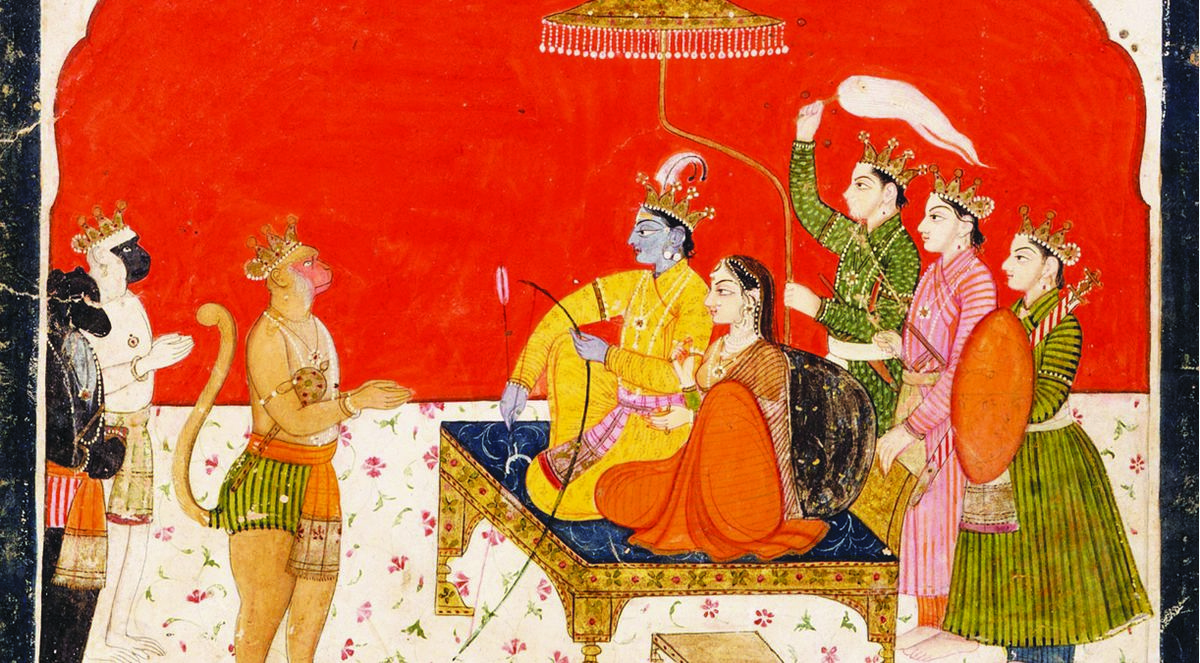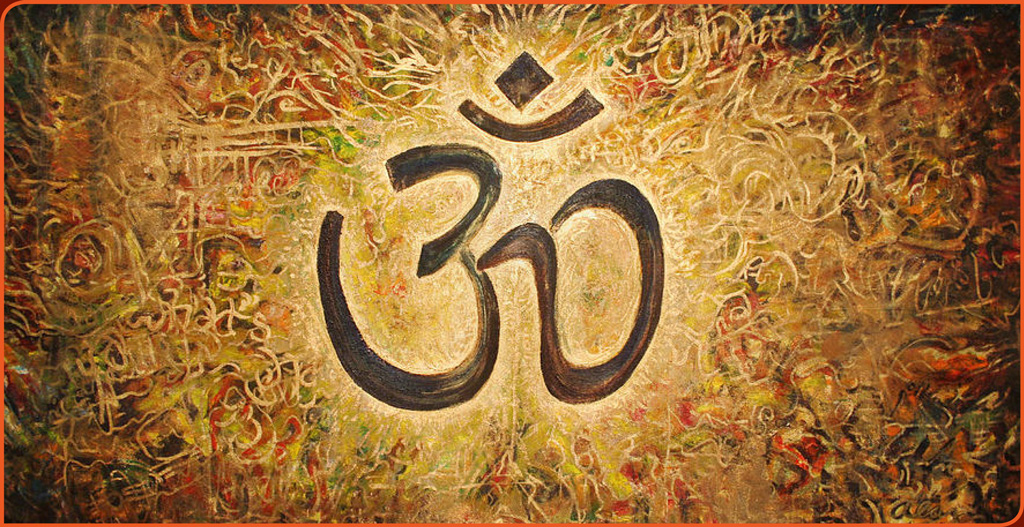Hindu religion began in ancient India thousands of years ago. Today, there are nearly a billion people in the world who practice this religion. We call our religion Sanatana Dharma. Santana means eternal & universal and Dharma means ‘that which holds together’.
Santana Dharma is that which holds society and civilisation together through righteous living. In wider aspect, it is defined as coming to terms with the eternal laws that govern everything. Searching for and harnessing these laws for the benefit of all is the way to practice religion.
Dharma means trying to make sense of the world and our place in it. It teaches us to treat everyone and everything with respect. The way Hindus practice their dharma is by being good and doing good to others. We are not only taught to look after our families, but also to look after our surrounding. Dharma makes us think hard about what this world is all about and our role in it.
Sanatana Dharma also translates to “Eternal Way of Life/ Duty”. That’s why, Hindu religion is also referred to as a way-of-life. Dharma, meaning duty, means that one following any of the teachings of Hindu religion, is simply fulfilling their duty in life.
Hindu religion has influenced our modern world in many different ways.
An important principle that Hindu religion has taught us is the law of Karma. It is the law of cause and effect in which each and every action has a reaction, generating conditions to be experienced within this lifetime or the next. The law of Karma prevents us to be unkind and inhuman towards our society. A Hindu accepts on scriptural authority that self-realisation is possible and attainable within one’s own life time and indeed it is the goal and eventual destiny of all life.
When we truly understand the concept of Karma, we then realize that we ourselves are responsible for everything in our life. It helps in stopping us from taking a revenge from our enemies. It is well said that Karma is like a boomerang, which returns back to the person that throws it.
Many people in the world today are knowingly or unknowingly following the teachings of Hindu religion without actually considering themselves to be a Hindu by faith. They don’t know that practices of yoga and meditation have been originated from and are integral to the Hindu religion. Yoga was developed by Hindus during the Indus-Sarasvati civilization in Northern India over 5,000 years ago. The term yoga, which is in fact ‘Yog’, was first mentioned in the oldest sacred texts, the Rig Veda. It was then gradually refined and developed by the Brahmans and Rishis who documented their practices and beliefs in the Upanishads, a huge work containing over 200 scriptures. In the late 1800 and 1900s, yoga masters began to travel to the West, attracting attention and followers. This led to establishment of numerous ashrams and yoga centres around the world.
Particularly after Covid-19, many people have introduced yoga in their day-to-day routine. Studies have shown that yogic breathing techniques improve respiratory and cardiac function, rendering it an effective tool to combat Covid-19. People who were in isolation for a long period of time during lockdown were suggested to practice yoga and meditation, since, it will calm down their mind and enhance their immunity.
The word ‘yog’ derives from Sanskrit and means to join or to reunite, symbolizing the union of body and consciousness. Recognizing the popularity and universal appeal, the United Nations proclaimed 21st June as the International Day of Yoga. People understand its real-world benefits for the physical, mental and spiritual well-being.
Today, much of the world is trending towards plant-based eating or are inclining towards a vegan diet. This global shift is inspiring the millennials of our modern world towards a better future of the planet. Everyone from celebrities to athletes to entire companies, like Google, are supporting the movement to eat more plant-based foods.
These people may not necessarily be Hindu devotes, but they do participate in the practices prescribed by the Hindu religion. The practice of Ahimsa or non-violence is a widely practiced Hindu teaching around the world. Ahimsa applies to humans, animals, from small insects to large mammals, the environment and even inanimate things such as thoughts. The teachings of Ahimsa are major factor in the rise of vegan population. The idea behind people who are transitioning themselves to vegan is that they are contributing towards the systematic abuse and cruelty within the food industry. This trend has not only affected the food industry, but also popular skincare and haircare brands are selling vegan products.
A book by Swaminarayan Aksharpith states: “To kill a living creature is considered a pap karma, which results in pain, misery or disease, either in this birth or subsequent births.”
The Manusmriti verse 5.51 states: “Anyone who sanctions the slaughter of an animal, cuts its flesh, buys, sells, cooks, serves and eats it, are equally the killers.”
Ayurvedic healing is another medicinal influence Hindu religion has made on society.
Developed over 3,000 years ago, Ayurveda is based on the belief that health and wellbeing is based on the overall balance between mind, body and spirit. Medicinal plant like Indian Goose Berry was advised to consume during Covid-19 as it is rich in Vitamin C. In the modern world, the healing methods of Ayurveda is increasingly becoming popular as it speaks of the elementary concepts connecting with the nature. It draws an inherent principle to nature for its foundation to maintain balance. Roots of Ayurveda are so deep that its ultimate aim is a healthy body, mind and longevity.
Efforts have been constantly put to elevate and preserve the great science of life – Ayurveda. We can proudly say Ayurveda as our heritage and pride which will keep flowing on to generations.
The most noticeable and prominent external symbols in Hindu culture, is the mark known as “Tilak”.
It is considered to be sacred and auspicious in Hindu culture. It is applied on the forehead and is a point of immense power and piety. This spot is called the Ajna Chakra, the most important of the seven key chakras or the energy centres of our body. Ajna means to ‘perceive” or “command”, it is considered to be the “eye of intuition”, through which a person can discern information that cannot otherwise be seen with one’s physical eyes. This “third eye” is a spiritually potent part of one’s being that help one to focus inward on the Divine. It invokes the divine energy, as well as act as a reminder of the ultimate life goal. Focusing on the Ajna Chakra has a restful effect on the mind. For this reason, great sanctity is attached to this spot on the forehead.
In a world filled with distractions that often pull one’s attention away from life’s higher purpose, applying tilak is one of several methods described in Hindu scriptures that helps re-centre one’s spiritual focus. Guests are always welcomed by applying tilak on their forehead. Wearing tilak everyday also acts as a reminder to others who see us of their own spiritual goals. It is a symbolic magnet that helps to pull the attention of all who see it to a spiritual plane of existence.
Because I learnt so much in my childhood about my roots, the transitions of my life have been easier. Hindu religion is a continuously evolving religion, with a lot of flexibility already built into it. The knowledge that stands behind Hindu religion can save the world.
ॐ असतो मा सद्गमय ।
तमसो मा ज्योतिर्गमय ।
मृत्योर्मा अमृतं गमय ।
ॐ शान्तिः शान्तिः शान्तिः ॥
ASato ma sad gamaya
Tamaso ma jyotir gamaya
Mrtyor ma amritam gamya
Lead me from unreal to the real truth
Lead me from darkness to light
Lead me from death to immortality
About the Author
Ritu Dialani is an individual with the drive to serve community and endorse Hindu values. She pursued Masters in Construction Management from the University of Adelaide and is now working as an Architectural Technician in Adelaide. She is the Secretary and acting President of the South Australian chapter of Hindu Youth Australia.



![[ India Today ] Ohio senator JD Vance thanks wife, a Hindu, for helping him find Christian faith](https://hinduvishwa.org/wp-content/uploads/2024/06/us-senator-jd-vance-reveals-how-his-hindu-wife-usha-helped-him-find-his-christian-faith-image-re-272530504-16x9_0-120x86.webp)










